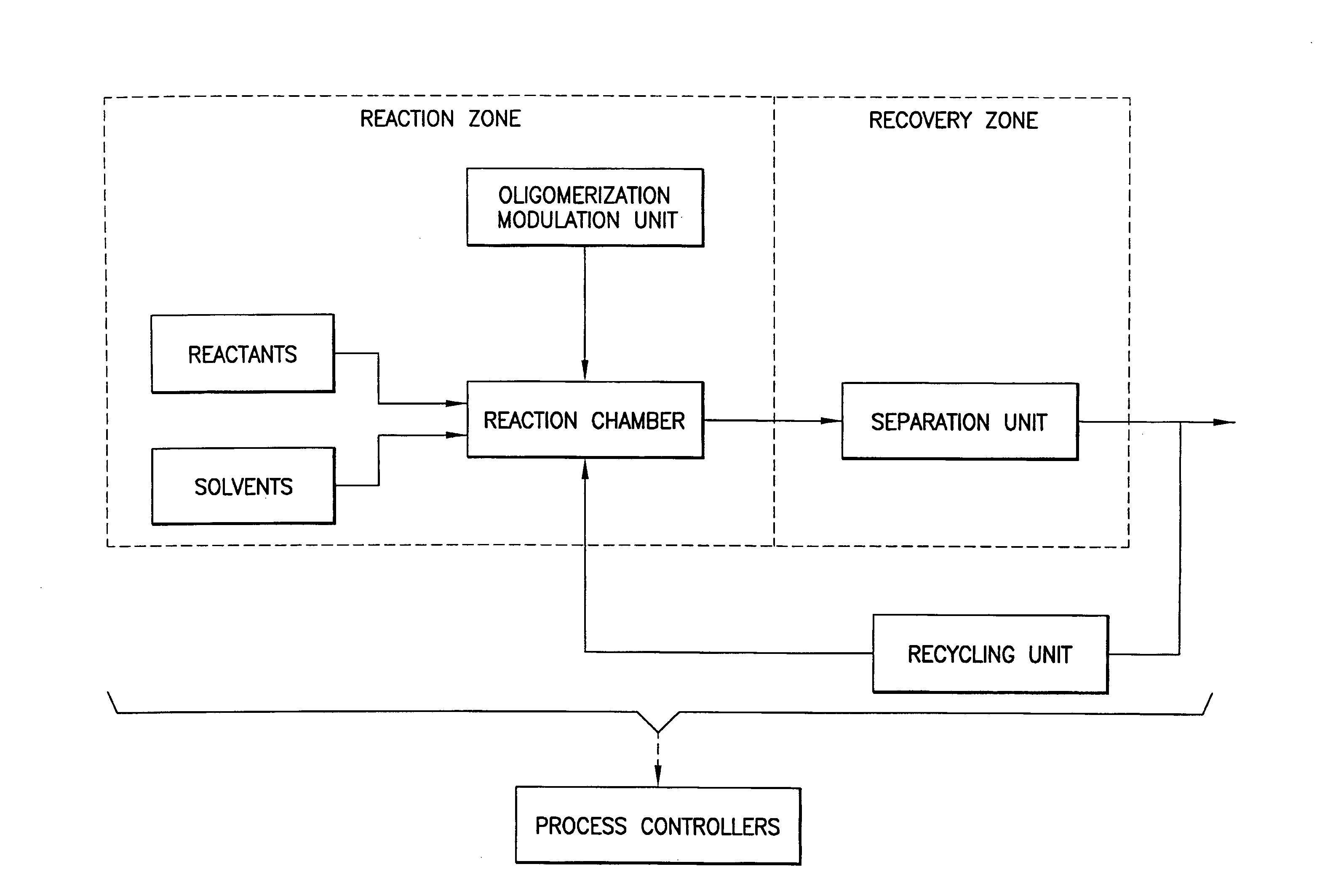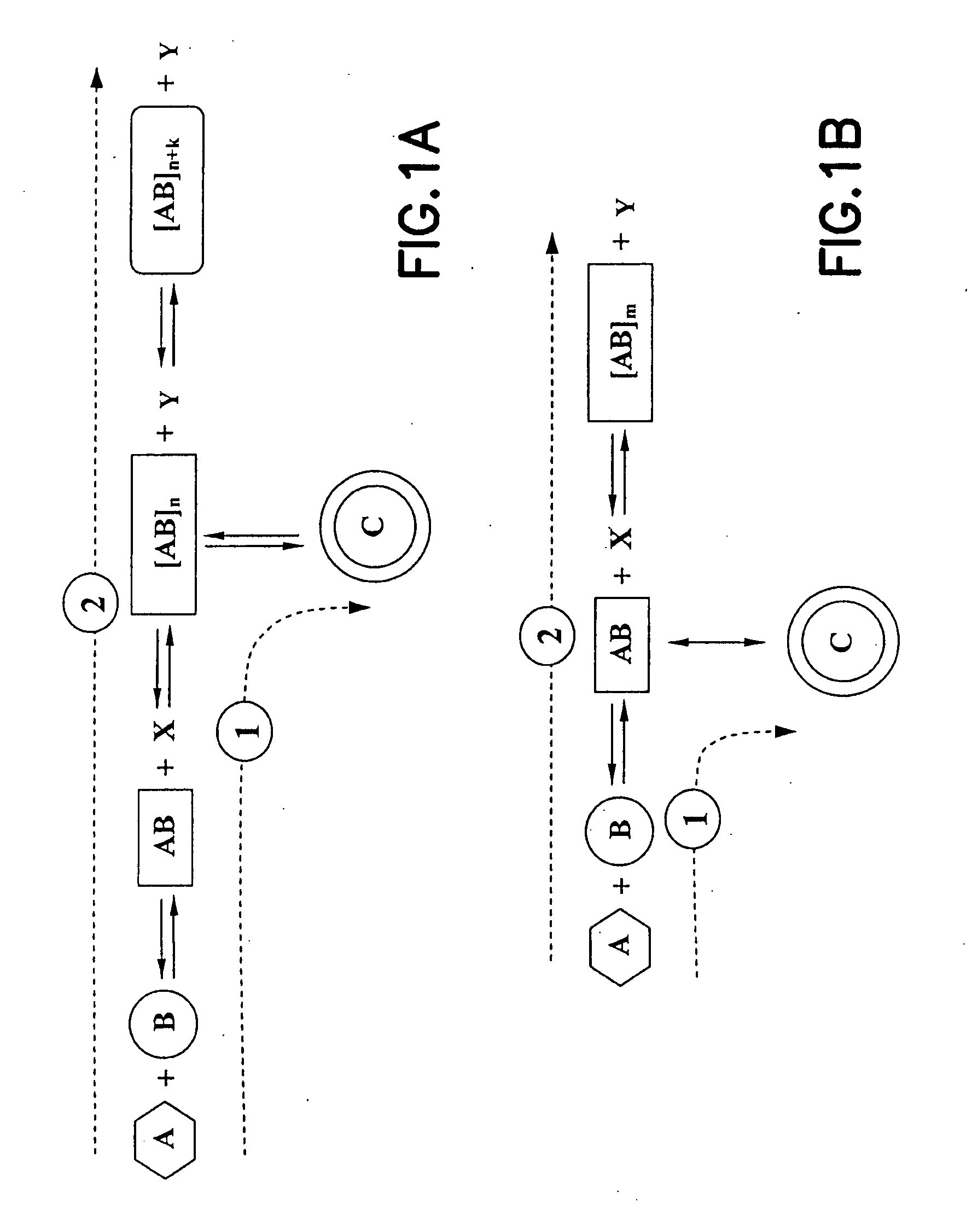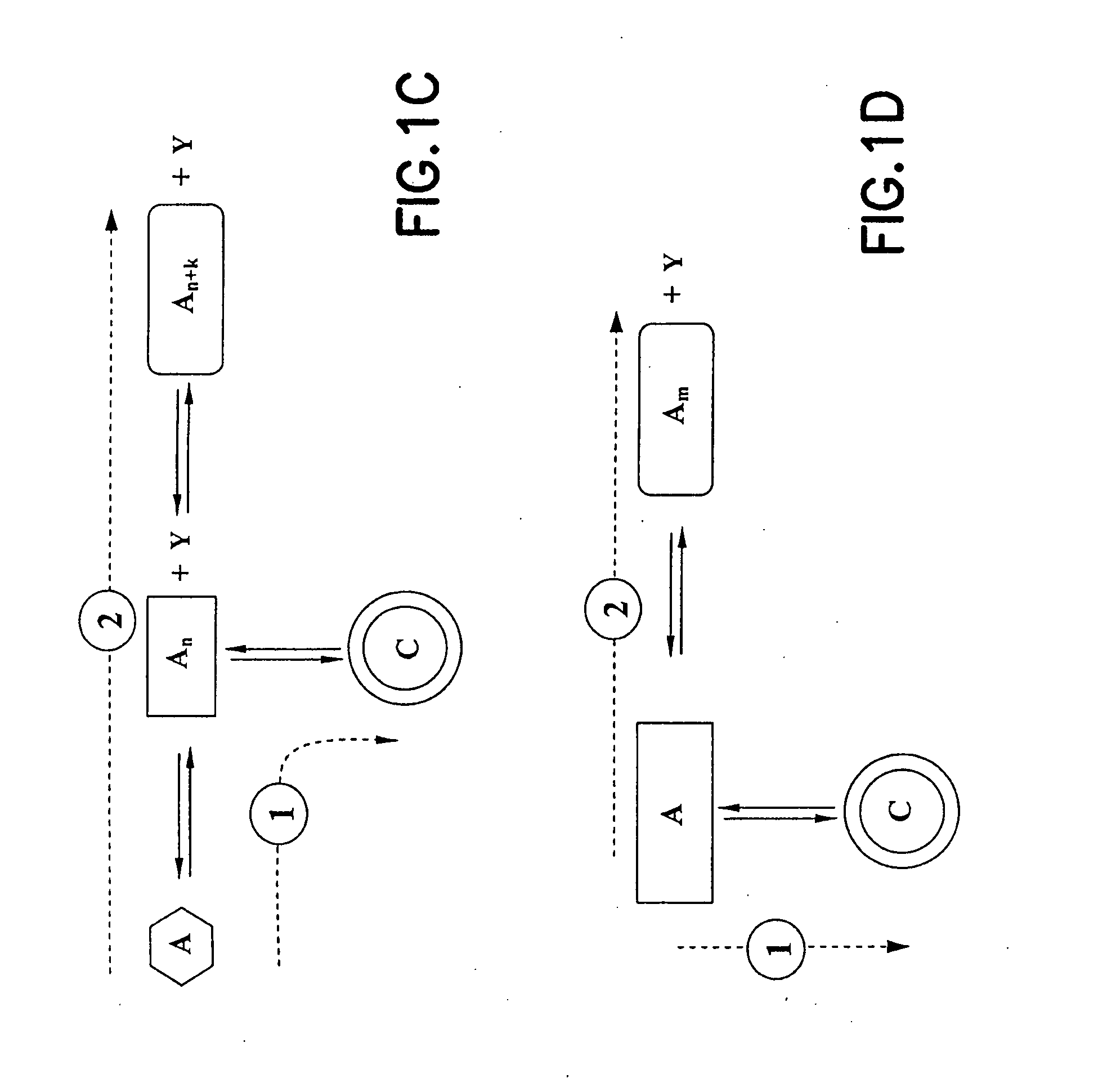Methods, compositions, and apparatuses for forming macrocyclic compounds
a macrocyclic compound and composition technology, applied in the field of methods, compositions, and apparatuses for forming macrocyclic compounds, can solve the problems of limiting the use of macrocyclic compounds in medicine and other important industries, reducing the volumetric production efficiency, and increasing the number of macrocyclic compounds in an explosive manner
- Summary
- Abstract
- Description
- Claims
- Application Information
AI Technical Summary
Benefits of technology
Problems solved by technology
Method used
Image
Examples
example 1
Formation of Macrocyclic Aminomethylphosphine
[0108] As shown in FIG. 5, two reactants can be used for forming a macrocyclic aminomethylphosphine compound. The first reactant comprises a bis(hydroxymethyl)-organylphosphine 1, and the second reactant comprises an aromatic diamine 2. The macrocyclic aminomethylphosphine compound is formed through a desired reaction pathway that comprises: (i) condensation reaction of four molecules of 1 and two molecules of 2, forming a linear intermediate product 3 with oligomerization number of two (where n=1), and cyclization of the linear intermediate product 3, forming a macrocyclic aminomethylphosphine compound 4. The intermediate product 3 is also susceptible to further undesired oligomerization in forming undesirable oligomers (where n>1).
[0109] In the practice of the present invention, the above-described reactions can be carried out in a solvent system that contains: (1) dimethylforamide (DMF) as the reacting solvent for dissolving the star...
example 2
Formation of Macrocyclic Imine
[0111] As shown in FIG. 6, two reactants 1 and 2 can be used for formation of the macrocyclic imine. The first reactant 1 comprises a diamine, and the second reactant 2 comprises a dialdehyde. Such reactants 1 and 2 form the macrocyclic imine through a desired reaction pathway that comprises: (i) condensation reaction of one molecule of 1 and one molecule of 2, forming a linear intermediate product (not shown), and (ii) cyclization of said linear intermediate product, forming a macrocyclic imine compound 4 via Schiff-base formation. The linear intermediate product is also susceptible to further undesired oligomerization in forming undesirable oligomers 3 (where n≧1).
[0112] In the practice of the present invention, the above-described reactions can be carried out in a solvent system that contains: (1) ethanol as the reacting solvent for dissolving the starting materials 1 and 2, (2) formamide as the co-solvent for facilitating phase-separation of the c...
example 3
Formation of Macrocyclic Boronate Compound
[0113] As shown in FIG. 7A, two reactants 1 and 2 can be used for forming a macrocyclic boronate compound. The first reactant 1 comprises an aryl boronic acid, and the second reactant 2 comprises a 2,3-dihydroxy- pyridine. Such reacants 1 and 2 can form the macrocyclic boronate compound through a desired reaction pathway that comprises: (i) condensation reaction of one molecule of 1 and one molecule of 2, forming a monomeric intermediate product 3, (ii) desired oligomerization of such monomeric intermediate product 3, forming a desired oligomer 4 with oligomerization number of four (where n=3), and (iii) cyclization of said desired oligomer 4, forming the desired boronate macrocyclic compound 5. Such desired oligomer 4 is susceptible to further undesired oligomerization in forming undesirable oligomers with n>3.
[0114] In practicing of the present invention, the above-described reactions can be carried out in a solvent system that contains:...
PUM
| Property | Measurement | Unit |
|---|---|---|
| Temperature | aaaaa | aaaaa |
| Phase separation | aaaaa | aaaaa |
| Pressure | aaaaa | aaaaa |
Abstract
Description
Claims
Application Information
 Login to View More
Login to View More - R&D
- Intellectual Property
- Life Sciences
- Materials
- Tech Scout
- Unparalleled Data Quality
- Higher Quality Content
- 60% Fewer Hallucinations
Browse by: Latest US Patents, China's latest patents, Technical Efficacy Thesaurus, Application Domain, Technology Topic, Popular Technical Reports.
© 2025 PatSnap. All rights reserved.Legal|Privacy policy|Modern Slavery Act Transparency Statement|Sitemap|About US| Contact US: help@patsnap.com



